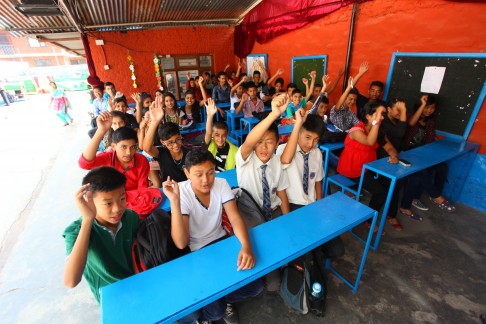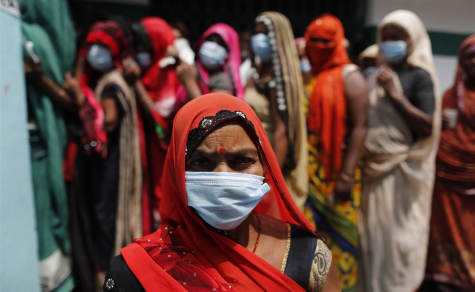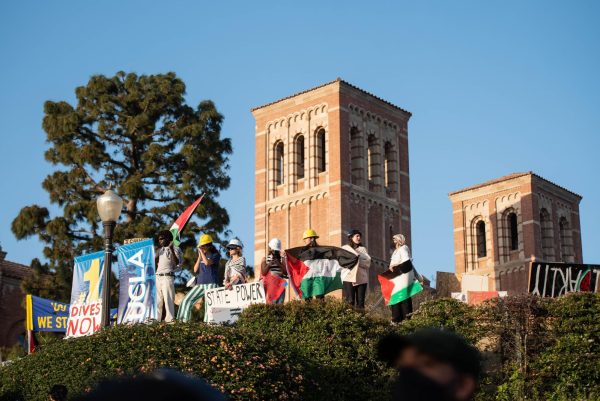The New Beginnings for Nepal
June 3, 2015
A little over a month ago, on April 25, a devastating earthquake with a magnitude of 7.8 left an impossible catastrophe in its wake. Today, the death toll has passed 8,500, according to the UN. Over 14,000 injuries have been recorded. At least 365,000 are now homeless. In total, over two-thirds of the nation has been majorly affected by the earthquake.
Every shock wave that occurred after the earthquake brought more damage to the already crippled nation. Many in Nepal are thankful to just have clean water and food. Without their homes, many have had to sleep wherever they can. There are now 8.1 million people in Nepal who are in need of humanitarian support.
People from all over the world have come together to lend a hand to Nepal in this state of crisis. Countries are sending food and supplies, medical teams, rescue teams, and volunteers to help the men, women, and children who have survived the tragedy. However, news has also surfaced that customs inspections at Kathmandu, Nepal are holding up the donations. Even U.S. military personnel and carriers were delayed due to the customs checks. There has been tension between the Nepalese government and the rescue efforts because of these blockages. The government has been complaining that many of the supplies are unnecessary, such as tuna and mayonnaise.
The semantics of the delivery of the items have also been scrutinized. The lack of vehicles and people has caused a delay and possible shortage in supplies to the areas that are in dire need for help. The government and the humanitarian efforts are collaborating to provide a better way to provide the proper supplies to the Nepalese.
Also, the United Nations is working on sending critical medical supplies to the different districts. Over 1,100 health facilities and close to 30 hospitals were damaged in Nepal. The UN has said that they will be sending 50 medical camp kits to reconnect the healthcare network in Nepal. However, the most critical 14 districts are in areas that are inaccessible by road, and thousands more cannot even get air support.
There are also concerns regarding the upcoming monsoon season in Nepal, which takes away the lives of many every year. The UN’s health kits are designed to help not only the victims of the earthquake, but also as a precaution to the upcoming rainy season. They are will also stand in place until a better time for the rebuilding of the damaged facilities.
Another critical area is education. Over 32,000 classrooms were destroyed in the initial quake, and the aftershocks have stalled efforts to rebuild schools. The government has made an official statement to construct temporary classrooms for the thousands of children. An estimate of 4,500 education centers will have to build to compensate for the damage. UNICEF says $24.1 will be required to fund the classrooms and train the teachers. It is proposed that classes will begin again in 2 weeks. Many view this as the official start in the rebuilding of Nepal.
“I definitely believe that schools will bring new hope to the Nepalese,” said JP Dabu (12). “The earthquake has been a terrible catastrophe on Nepal, and it’s steps like these that will restore the country and make it even better than it once was.”
YLHS is also holding a fundraiser for Nepal. The annual “I Have a Dream” Speech Contest will be donating all proceed to help Nepal. The contest will be in the Forum, Thursday, June 4 at 6 pm.











































